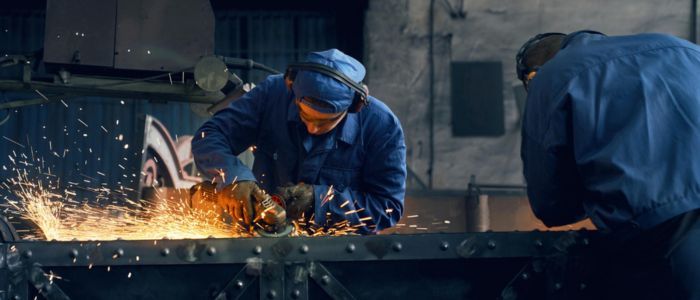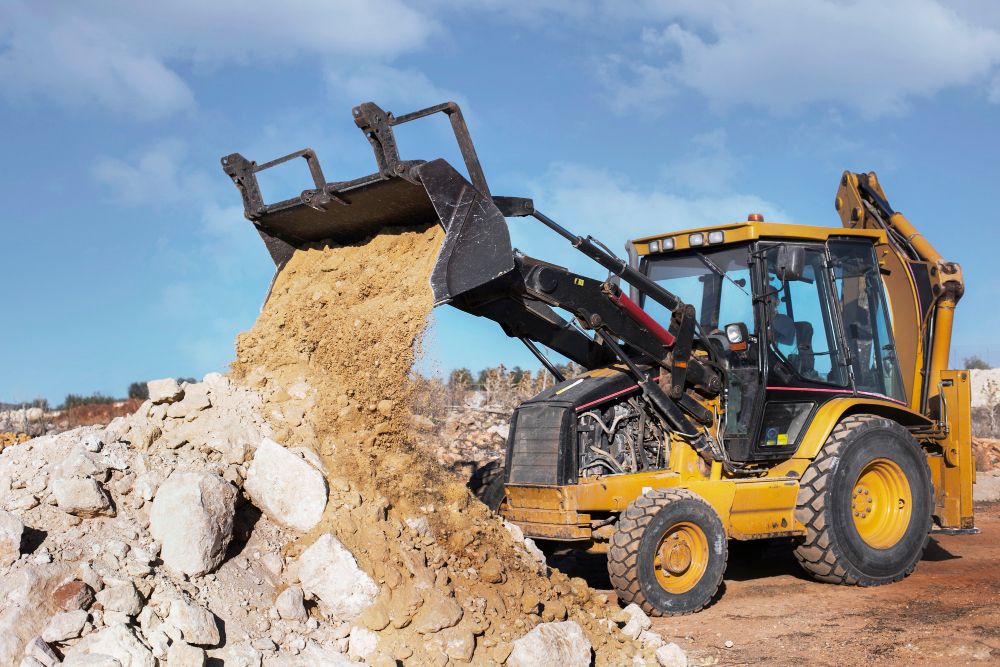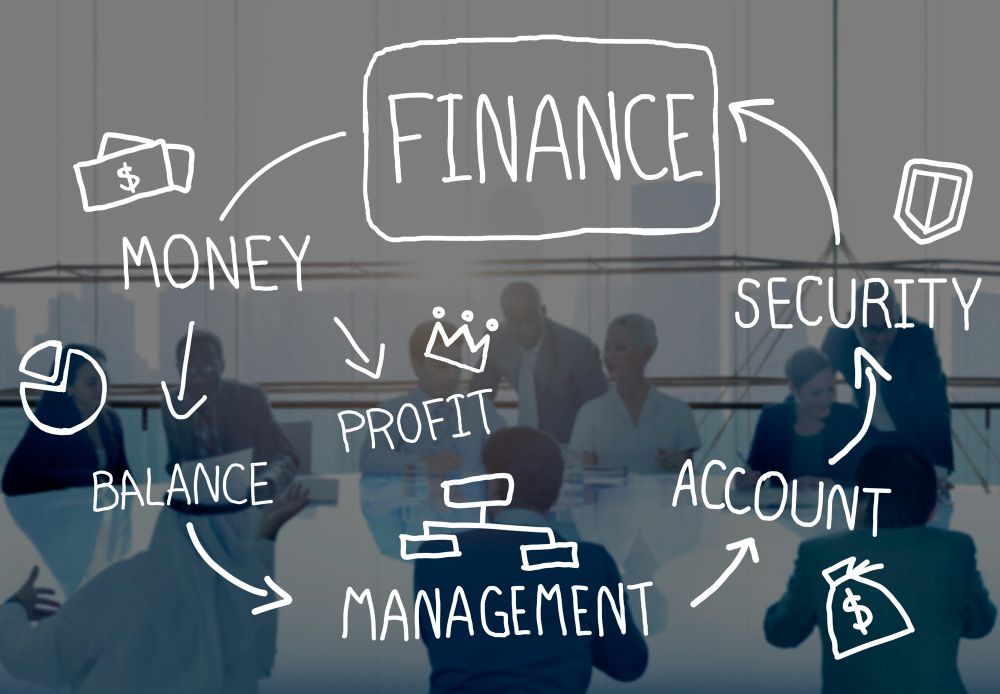Green is the New Black: Why the GGRF Matters to Your Small Business
What if you could significantly reduce your operating costs? Then imagine if you could attract a new wave of environmentally
Fuel Your Small Business Growth with Equipment Financing: Learn How to Avoid the Top Mistakes and Secure Success. Don't Miss Our Expert Tips and Insights to Thrive!

By Corey Rockafeler

As a small business owner, acquiring the right equipment is crucial for your company's growth and success. Navigating the world of equipment financing however, can be complex and challenging.
This can lead to common mistakes that can hinder your business's financial stability and future prospects. In this expert guide, we will highlight the top mistakes small businesses often make in equipment financing and provide valuable insights on how to avoid them.
Whether you are considering purchasing essential machinery, upgrading technology, or expanding your operational capabilities, understanding and sidestepping these pitfalls can make a significant difference in the success of your equipment financing decisions.
Let's delve into the critical aspects of equipment financing and equip your business with the knowledge to make sound and strategic choices. Avoid these mistakes and pave the way for an optimized and prosperous future for your small business.

One of the most common mistakes small businesses make in equipment financing is failing to conduct a comprehensive equipment needs assessment. Without a clear understanding of your specific equipment requirements, you may end up either overcommitting or underinvesting in essential assets.
The Significance of Thorough Equipment Needs Assessment
Before diving into equipment financing options, take the time to assess your business's unique needs and objectives. Consider the following factors:
Business Goals: Identify your short-term and long-term business goals to determine the equipment necessary to achieve them. Whether it's increasing production capacity, improving efficiency, or expanding product offerings, align your equipment choices with your strategic vision.
Operational Demands: Analyze your day-to-day operations and workflows to pinpoint areas where new equipment can streamline processes and enhance productivity.
Equipment Lifespan: Assess the expected lifespan of the equipment you plan to acquire. Understanding the equipment's useful life will help you choose the right financing option that matches the equipment's duration of use.

Avoiding Overcommitment or Underinvestment in Equipment
Without a proper needs assessment, you risk overcommitting to equipment that may not yield significant returns or underinvesting in crucial assets that could have a substantial impact on your business's performance.
-Overcommitment: Investing in equipment that surpasses your actual needs can strain your budget and impede cash flow. Avoid overcommitment by thoroughly evaluating the necessity and financial feasibility of each equipment purchase.
-Underinvestment: On the other hand, underinvesting in necessary equipment might hinder your business's growth potential and competitive edge. Ensure you allocate sufficient funds to acquire the assets that are critical to your operations.
By conducting a thorough equipment needs assessment, you can make informed decisions that align your equipment financing with your business's requirements, avoid unnecessary expenses, and set the stage for long-term success.

When it comes to equipment financing, small business owners often fixate on traditional loans without exploring alternative options that may be better suited to their specific needs and financial situations. By overlooking these alternatives, they may miss out on potential benefits that could optimize their equipment acquisition process.
Exploring Equipment Leasing, Loans, and Lines of Credit
1. Equipment Leasing: Equipment leasing offers a flexible and cost-effective solution for small businesses. Instead of purchasing equipment outright, leasing allows you to rent the equipment for a specified period. This option can be particularly advantageous for businesses with changing technology needs or those looking to preserve working capital.
2. Equipment Loans: Equipment loans are a common financing option where a lender provides a lump sum to purchase the equipment, which is then repaid over a set period with interest. Equipment loans can be a suitable choice if you seek full ownership of the equipment at the end of the repayment term.
3. Equipment Lines of Credit: An equipment line of credit is a revolving credit facility that provides access to funds for equipment purchases. It functions similarly to a business line of credit, allowing you to draw on the credit line when needed and repay it as you use it.
Tailoring Financing to Match Specific Business Needs

Each business is unique, and the financing option that works well for one may not be the ideal choice for another. Consider the following factors when selecting the right financing option:
A. Business Cash Flow: If maintaining steady cash flow is crucial for your business, leasing or lines of credit may be more suitable, as they often involve lower monthly payments.
B. Equipment Lifespan: If the equipment's useful life aligns with your long-term business plans, an equipment loan may be a better fit, offering full ownership at the end of the term.
C. Technology Upgrades: If your industry demands frequent technology upgrades, leasing allows you to stay current with the latest equipment without the commitment of long-term ownership.
By exploring these alternative financing options and tailoring your choice to match your business's unique needs, you can find the most suitable solution that aligns with your financial goals and ensures the efficient acquisition of essential equipment.

One of the critical mistakes small business owners often make in equipment financing is underestimating the total costs associated with equipment ownership.
It's essential to consider more than just the initial purchase price when making financing decisions to ensure a comprehensive understanding of the financial implications.
A. Considering All Associated Expenses Beyond the Purchase Price
- Installation Costs: Equipment installation may involve additional expenses, such as setup fees, delivery charges, and any required modifications to existing infrastructure. Account for these costs to avoid unexpected financial burdens.
-Maintenance and Repairs: Over time, equipment may require routine maintenance and occasional repairs to ensure its optimal performance. Assess the anticipated maintenance costs and factor them into your financing calculations.
-Training and Support: If the new equipment necessitates employee training or ongoing technical support, budget for these essential services to maximize the equipment's efficiency and minimize downtime.
B. Creating a Comprehensive Budget for Equipment Acquisition
Before finalizing any equipment financing decision, create a detailed budget that encompasses all relevant costs associated with the equipment. This comprehensive budget should include:
-Upfront Costs: Calculate the total initial investment required for the equipment, incorporating the purchase price and any associated installation expenses.
-Recurring Expenses: Determine the ongoing costs related to equipment maintenance, support, and potential training needs throughout its lifespan.
-Resale Value: If the equipment is expected to retain value over time, consider its potential resale value when evaluating the overall financial impact.
Taking a holistic approach to assess the total costs of equipment ownership will allow you to make well-informed financial decisions that align with your business's budget and operational requirements.
By accurately estimating the total expenses, you can ensure that your equipment financing strategy remains sustainable and supportive of your business's long-term growth. In the next section, we will explore the impact of equipment financing on cash flow and ways to mitigate potential constraints.

Understanding the impact of equipment financing on your small business's cash flow is crucial for making sound financial decisions. While acquiring new equipment is essential for growth, the associated financing arrangements can significantly affect your available working capital.
Understanding Cash Flow Implications of Equipment Financing
-Monthly Payments: Equipment financing typically involves regular monthly payments. These payments can affect your cash flow by reducing available funds for other operational expenses.
-Seasonal Variations: Consider any seasonal fluctuations in your business's cash flow when structuring financing agreements. This will help you align payment schedules with periods of higher revenue to minimize cash flow strain.
B. Mitigating Cash Flow Constraints through Strategic Decisions
-Flexible Financing Options: Opt for flexible financing options, such as equipment leasing, which often offers lower monthly payments compared to traditional loans. Leasing can provide better cash flow management, especially during periods of business expansion or uncertainty.
-Forecasting and Budgeting: Develop accurate cash flow forecasts and budgets to proactively manage expenses related to equipment financing. This will help you plan for future payments and ensure sufficient working capital.
-Equipment Lifecycle Considerations: Align the lease or loan term with the equipment's expected lifecycle. Choosing financing terms that match the useful life of the equipment can prevent cash flow disruptions.
-Early Payoff Options: Evaluate the possibility of early payoff if your business experiences a boost in revenue. Early payoff may help you reduce interest costs and free up cash flow in the long run.
By proactively addressing cash flow considerations during equipment financing decisions, you can mitigate potential constraints and ensure your business remains financially stable and adaptable to changing market conditions.
The next section will discuss the importance of skillful negotiation to secure favorable equipment financing terms and rates for your small business.

When it comes to equipment financing, small business owners may shy away from negotiation, assuming that financing terms and rates are non-negotiable. However, savvy negotiation can lead to significant savings and more favorable financing arrangements.
The Importance of Negotiating Equipment Financing Terms
-Cost Savings: Negotiating lower interest rates or reduced fees can lead to substantial cost savings over the life of the financing agreement.
-Flexibility: Skillful negotiation allows you to tailor the financing terms to suit your business's cash flow and operational requirements.
Seeking Competitive Offers from Multiple Lenders or Lessors
-Shop Around: Don't settle for the first financing offer you receive. Take the time to explore multiple lenders or lessors to compare terms and rates.
-Leverage Multiple Offers: Obtaining competitive offers gives you leverage during negotiations, encouraging lenders to provide more attractive terms.
- Leveraging Creditworthiness for Better Deals
-Showcase Strong Financials: Present your business's strong financial performance and creditworthiness as an asset during negotiations.
-Negotiate from a Position of Strength: Demonstrating a solid financial standing can give you a negotiating advantage and improve your bargaining power.
Customizing Lease or Loan Terms
-Tailor Payment Schedules: Negotiate payment schedules that align with your business's revenue cycles and cash flow patterns.
-Discuss Early Payoff Options: Inquire about early payoff incentives or reduced fees for settling the financing ahead of schedule.
By embracing negotiation as a vital aspect of equipment financing, small business owners can secure more favorable terms, optimize their cash flow, and reduce overall financing costs.
Negotiating with confidence can empower you to make the most of your financing arrangements and maximize the benefits of equipment acquisition. In the next section, we will highlight the importance of reviewing financing agreements thoroughly and understanding the terms and conditions before finalizing any deal.

Business Name: TechCraft Manufacturing
Challenge: TechCraft Manufacturing aimed to expand its manufacturing operations to meet increasing demand. However, the upfront cost of purchasing the required equipment posed a financial challenge.
Solution: TechCraft Manufacturing opted for equipment leasing, securing the necessary machinery without a substantial upfront investment.
Results: With the new equipment in place, TechCraft Manufacturing experienced a significant boost in production efficiency and revenue streams.
Case Study 2: Launching a Promising Start-up
Business Name: FreshBrew Coffee Roasters
Challenge: FreshBrew Coffee Roasters needed to invest in state-of-the-art coffee roasting equipment to launch their café, but available capital was limited.
Solution: FreshBrew Coffee Roasters pursued an equipment loan with a customized term that aligned with their projected cash flow.
Results: The equipment loan allowed FreshBrew Coffee Roasters to launch their café on schedule and achieve profitability, leading to further expansion.
These case studies showcase how strategic equipment financing decisions can drive growth and success for small businesses.

In the ever-changing landscape of small business operations, equipment financing plays a pivotal role in driving growth, efficiency, and success. Throughout this comprehensive guide, we have explored the top mistakes that small business owners often make in equipment financing and provided valuable insights on how to avoid them.
By conducting a thorough equipment needs assessment, exploring alternative financing options, and considering the total costs of equipment ownership, you can make well-informed decisions that align with your business's goals and financial capabilities.
Understanding the impact of equipment financing on cash flow and skillfully negotiating favorable terms can further optimize your financing arrangements, empowering your business to thrive.
Furthermore, the real-life case studies of TechCraft Manufacturing and FreshBrew Coffee Roasters exemplify how strategic equipment financing choices can lead to tangible business growth and expansion.
These success stories demonstrate that with the right financing strategy, small businesses can overcome financial barriers and achieve their aspirations.
As you embark on your equipment financing journey, we encourage you to approach the process with a clear understanding of your business's unique needs and goals. Seek guidance from reputable financing providers and financial experts to make the best choices for your small business.
Sign up for the newsletter and get our latest stories delivered straight to your inbox.